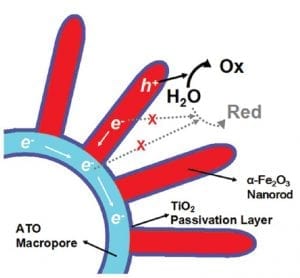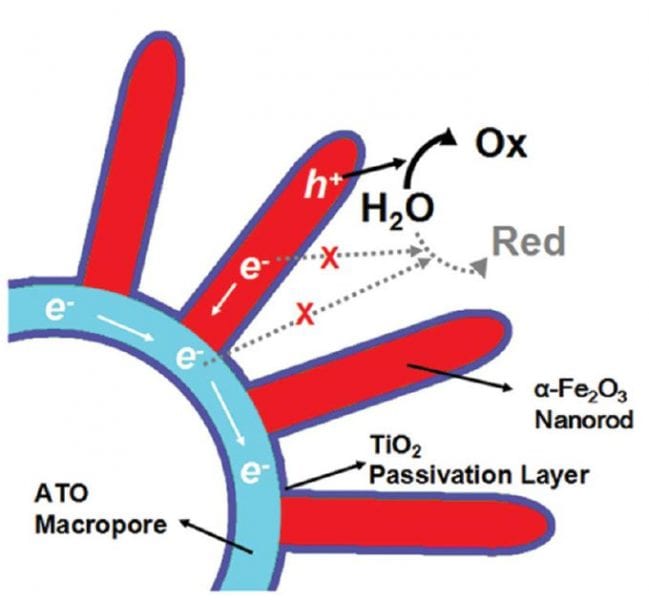 In order to boost the performance of photoelectrochemical (PEC) cells, researchers from Guangzhou, China developed a novel hematite-based photoanode material using methods of structural design and nanoengineering. The three-dimensional structure of this material shows outstanding light harvesting, conducting, and charge transport properties, therefore providing a novel material with potential use in efficient water-splitting PECs.
In order to boost the performance of photoelectrochemical (PEC) cells, researchers from Guangzhou, China developed a novel hematite-based photoanode material using methods of structural design and nanoengineering. The three-dimensional structure of this material shows outstanding light harvesting, conducting, and charge transport properties, therefore providing a novel material with potential use in efficient water-splitting PECs.
Efficiently utilizing solar energy is necessary to meet current and future energy and environmental challenges. To realize this goal, the storage and off-hour usage of solar energy is crucial. Since they convert solar energy into storable chemical fuels such as hydrogen gas via water splitting or methane via CO2 reduction, PECs are an important target for researchers.
Because of its availability, stability, and absorption range, α-Fe2O3 (hematite) is a promising photoanode material for PECs, which are used for water splitting. Yet, there is still a great potential to improve the properties of hematite photoelectrodes, due to their poor conductivity, hole diffusion length and long penetration depth. To enhance the conductivity and light harvesting properties of hematite, the group from Guangzhou incorporated 1D hematite nanorods into 3D antimony-doped tin oxide (Sb:SnO2), a so-called macroporous, transparent conducting oxide. Further disadvantages of the hematite photoelectrode, were eliminated by a simple treatment with TiCl4, which led to fewer adverse reactions by passivating the surfaces and even higher conductivity because of Ti doping of the hematite.
Advanced Science is a new journal from the team behind Advanced Materials, Advanced Functional Materials, and Small. The journal is fully Open Access and is free to read now at www.advancedscience.com.

















